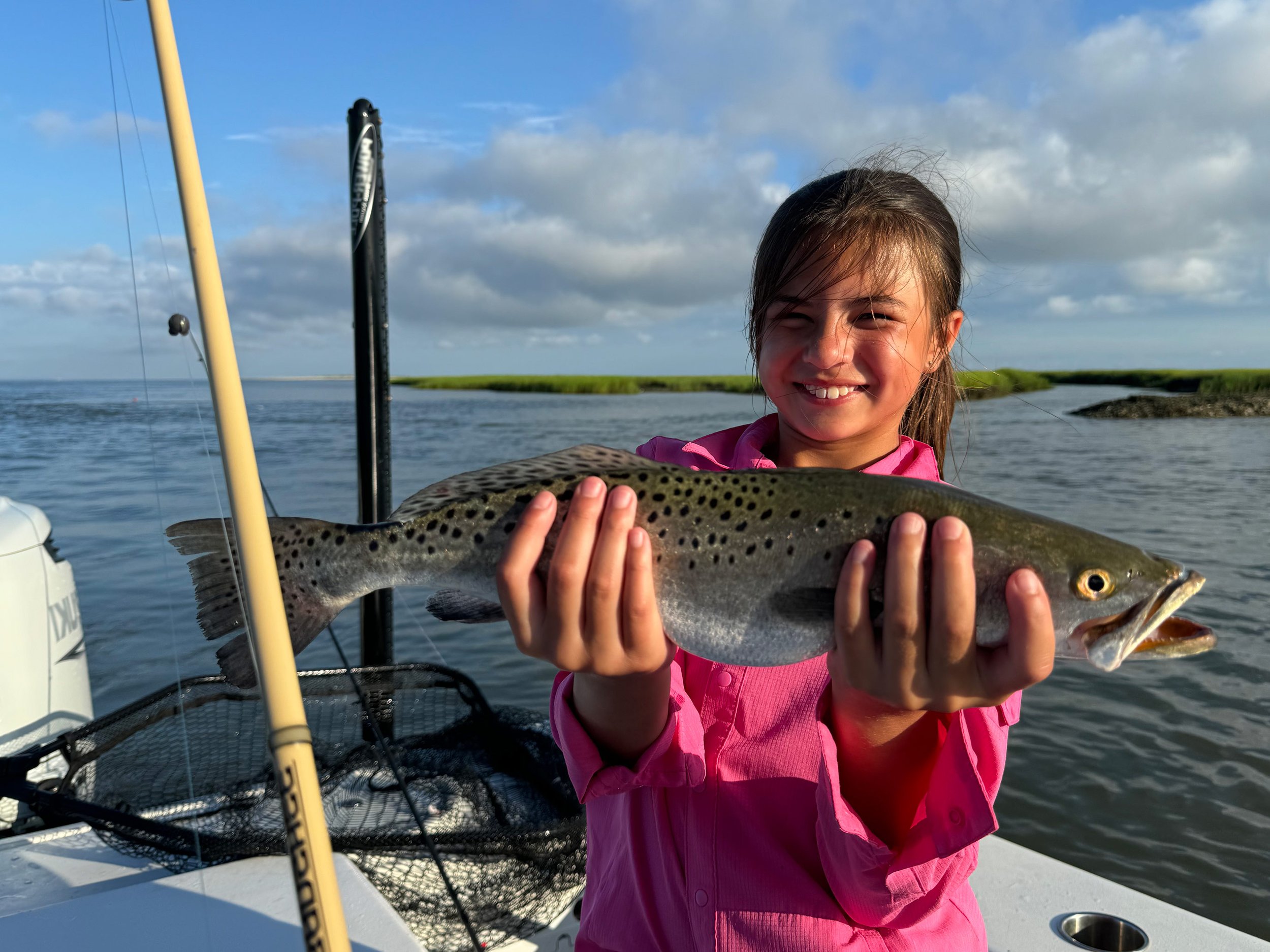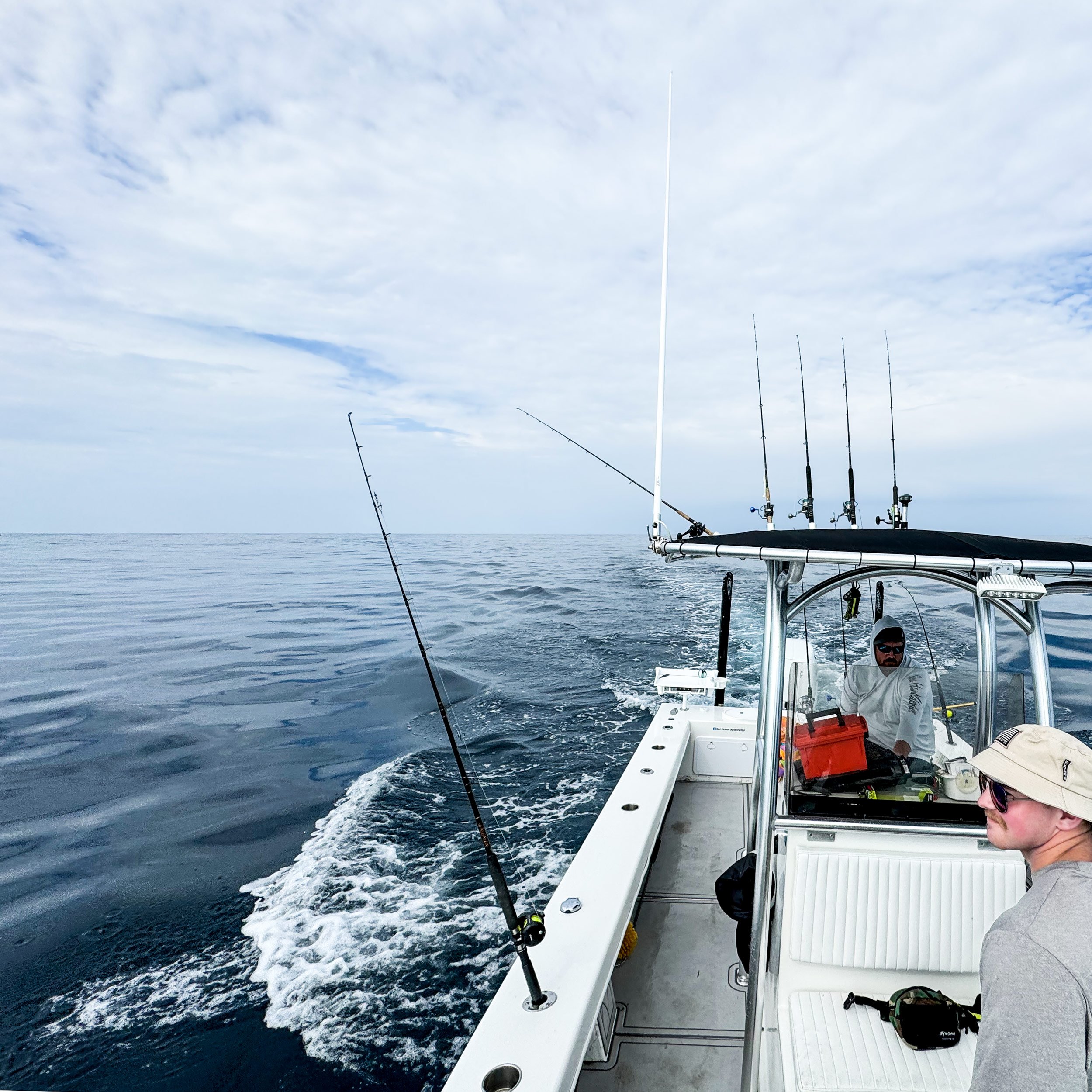
Fishing Beaufort & the Low Country
Great Fishing and Great Weather Year-round
Beaufort and the Sea Islands’ fishing might be overshadowed by the region’s spectacular scenery, rich history, distinctive food, and renowned resorts. But that doesn’t mean the fishing isn’t great too. In fact, we enjoy a diverse, year-round fishery with opportunities ranging from stalking tailing redfish in the flooded marsh to high-speed trolling for wahoo in the Gulf Stream. No matter what time of year you’re in Beaufort, you’ll find something biting. The following calendar provides a brief summary of our most popular species and the best times of year to target them.
Beaufort Fishing Calendar
| Jan | Feb | Mar | Apr | May | Jun | Jul | Aug | Sep | Oct | Nov | Dec | |
|---|---|---|---|---|---|---|---|---|---|---|---|---|
| Redfish | ||||||||||||
| Trout | ||||||||||||
| Black Drum | ||||||||||||
| Bull Redfish | ||||||||||||
| Tarpon | ||||||||||||
| Sheepshead | ||||||||||||
| Flounder | ||||||||||||
| Whiting | ||||||||||||
| Black Sea Bass | ||||||||||||
| Cobia | ||||||||||||
| Spanish Mackerel | ||||||||||||
| King Mackerel | ||||||||||||
| Mahi | ||||||||||||
| Wahoo | ||||||||||||
| Vermilion Snapper | ||||||||||||
| Red Snapper | ||||||||||||
| Triggerfish | ||||||||||||
| Sharks | ||||||||||||
| Shrimp | ||||||||||||
| Crabs |

Inshore Fishing Beaufort & the Low Country
Our inshore fishing in the Beaufort region is good more or less year-round, but there are definitely certain times of year that are better for certain species.
Winter Inshore Fishing
Winters are mild with average highs in the 60s and average lows in the 40s. Inshore, bait becomes scarce and the water clears up. Dolphins no longer have mullet to eat, so redfish become prime forage. The fish school up for warmth and safety, often tucking in tight to structure or holding far back in creeks. Once you locate a school, you can catch fish after fish. Winter is also the best time of year for sight fishing for redfish. Black drum are another prime target in winter.
Spring Inshore Fishing
Spring is a transitional period in the Low Country. The bite can be very hit or miss. Schools of fish will begin breaking up as the temperatures rise. Fish can be picky eaters this time of year. Finding the time they want to eat and right bait is key. Black drum provide reliable action along with redfish, and trout begin migrating into the area.
Summer Inshore Fishing
Redfish, flounder, and speckled trout are the inshore stars during the Low Country summer. Big trout like to feed just as the sun is rising, when their energy levels are higher from the cooler night. They’ll smash topwater plugs, flies, and live finger mullet. It’s a great time to get a red eye start, reset your circadian rhythm, watch the sunrise and catch your dinner.
Flounder congregate in the inlets this time of year as well. While we don’t catch big numbers of them, they are a welcome bonus, often found sitting at feeder creeks on the outgoing tides. These fish will bite finger mullet, shrimp, and jigs alike.
Redfish will move into the grass of the marsh with the rising summer tides, often standing on their noses as they root in the mud for prey and exposing their tails for the observant angler to see. Hunting redfish in the grass is like stalking an animal in the woods; one must remain quiet, patient, and ready at all times.
Fall Inshore Fishing
Fall is electric in the Low Country. Everything come alive as the heat of summer wanes. Shrimp and mullet are plentiful, and you will see birds and fish chasing them in the shallows. Redfish, trout and flounder will be on the flats feeding heavily in preparation for winter.
Nearshore Fishing Beaufort & the Low Country
Nearshore fishing refers to fishing from the bigger waters of the inlets and sounds out to around 10 miles past the barrier islands for a variety of species ranging from structure dwellers like sheepshead to migrators like Spanish mackerel.
Winter & Spring Sheepshead
From roughly December through April, big sheepshead can be found on the nearshore reefs. This type of fishing is tricky and addictive. Set the hook and get ready to pull that big fish up before he takes you into the reef and breaks you off! Sheepshead aren’t just incredible fighters, though; they’re also delicious fare. Their diet of crustaceans gives their meat a sweet and mild flavor. Capt. Tommy prefers to eat this fish in poke or nigiri. Better yet, take it to Chef Hunter and let him create a masterpiece.
April Dinosaur Black Drum
Every April, there’s a two- to three-week period when BIG black drum flood into the sounds and inlets. These 30- to 90-pound fish are often referred to as dinosaurs because of their age and size. They’re incredibly powerful and need to be fought quickly on heavy tackle so that they can be revived and released. When pulled from the depths, a big black drum sounds like a 15" subwoofer — just an amazing fish to lay eyes and hands on.
Summer Inshore Cobia
As the sheepshead bite tails off in late spring, the first cobia start migrating into the area. The Broad River was once world renowned for its cobia fishery. Unfortunately, multiple factors decimated the resource, but it is now recovering, thanks to an inshore closure and stocking efforts by the Waddell Mariculture center. In 2024, there were many smaller juvenile cobia to be caught — an improvement from previous years and a sign of good things to come.
Tarpon, Bull Reds, and Sharks
As water temperatures rise with the arrival of summer, schools of menhaden flood the inlets. Tarpon, bull reds, and sharks aren’t far behind. The the experienced fisherman targeting tarpon, the sharks may become a nuisance. But to the beginner who has never seen one up close, a drag peeling battle with a shark is a memory they wont soon forget.
‘Red October’
Although we call it “Red October,” there’s a span of around a month from late September into October that offers the best fishing of the year for bull reds — redfish over about 30” or 10 lbs. This is when they feed heavily before moving offshore for winter. If you goal is to catch a trophy redfish, this is the time to get on the water.

Beaufort Offshore Fishing
We refer to trolling and bottom fishing from about 10 to 40 miles from the coast as offshore fishing. Like our nearshore fishing, it features a mixed bag of year-round residents and migratory species. Bluewater pelagics like mahi, tuna, and billfish are unusual in this area; instead, we focus more on kingfish, cobia, and reef dwellers like red snapper, vermilion snapper, triggerfish, and grouper.
Big Offshore Cobia
Late spring through mid-summer offer the best fishing for offshore cobia, which are known to swim in packs around reef structures. Catching these monsters is adrenaline-pumping sportfishing; a 50 lb. cobia is a fish of a lifetime for most and not uncommon.
Snapper and Grouper
American red snapper — which are catch-and-release only except for a few days each year — are so plentiful year-round they’re sometimes seen as pests by anglers targeting gag grouper. A big snapper, though, is still exciting to catch.
Vermilion snapper are smaller and less exciting to catch but at least as good on the table as their larger cousins, and they’re open year-round with a 5-fish limit. Vermilions — commonly known as “beeliners” — can be caught year-round, but summer is best.
Sharks are also a constant presence around the offshore reefs, frequently eating hooked fish.
King Mackerel Season
High-jumping, drag-smoking king mackerel are best from June through October and can be caught by trolling lures or baits. They’re also frequently caught on a “flat line” — an unweighted baitfish sent out while bottom fishing.
Tasty black sea bass and powerful amberjack can also be caught year-round in the 10- to 40-mile range, while during summer we occasionally pick up a lost mahi or blackfin tuna.
Beaufort Gulf stream Fishing
The Gulf Stream is a huge current of warm, blue water that flows northward up the east coast of North America. Off South Carolina, it lies roughly 60 to 85 miles out. This is where we target bluewater pelagic species like marlin, sailfish, mahi and tuna.
Mahi May
Mahi mahi (aka “dolphin”) are seasonal in our area, with the action coming in late spring and early summer. Mahi fishing normally peaks in May, and local offshore anglers look forward all winter and spring to “Mahi May.” The vanguard of the migration typically arrives in the second half of April, and that’s when your chances of a big bull are best.
Winter & Spring
Fishing for wahoo and blackfin tuna is best during the colder months — usually November through March. We normally target these species with conventional offshore trolling methods or live-baiting. To really stack the boat with big wahoo, though, there’s no substitute for high-speed trolling, which consist of dragging heavy lures at speeds of up to 20 mph.
Billfish Season
Sailfish, white marlin, and blue marlin migrate through our waters during the height of summer, June, July, and August.
